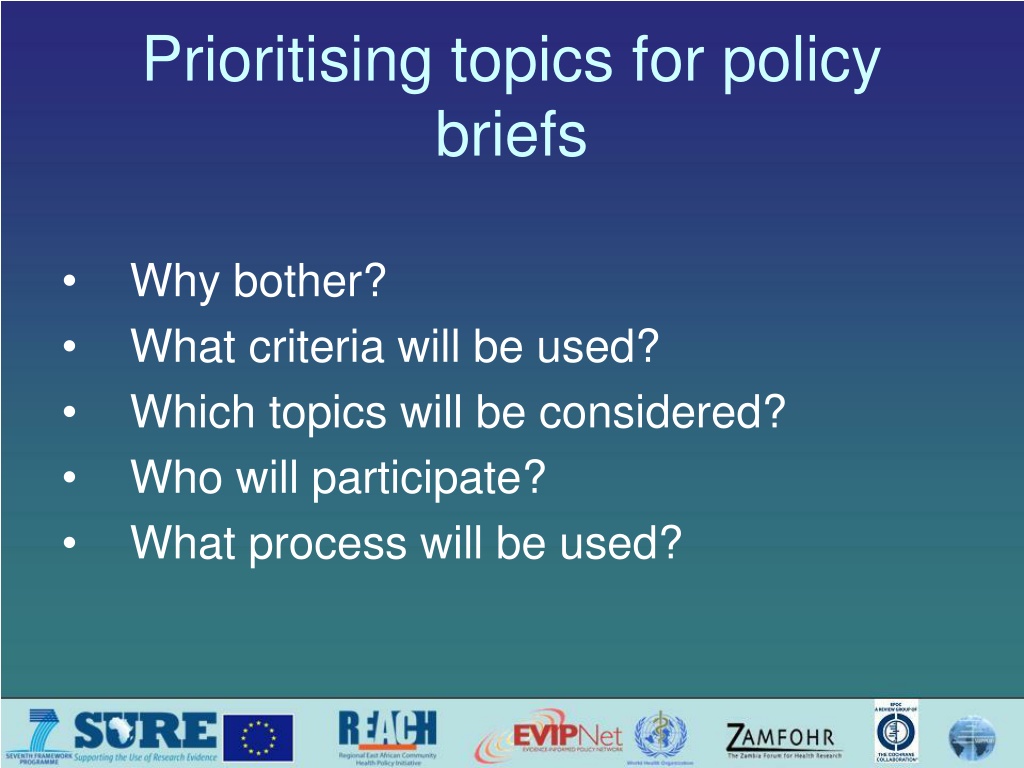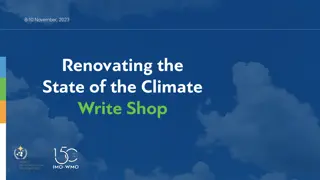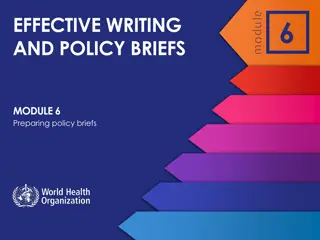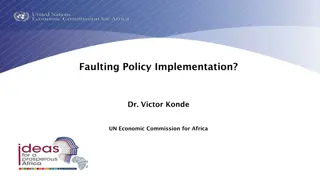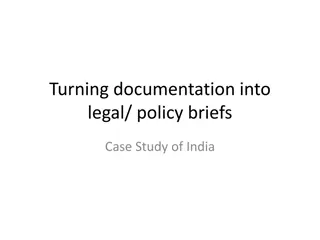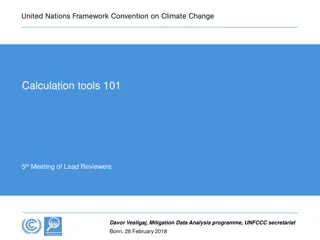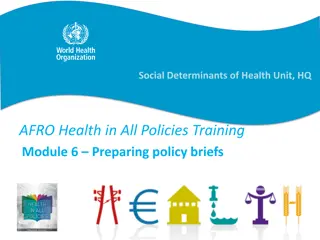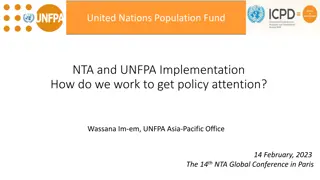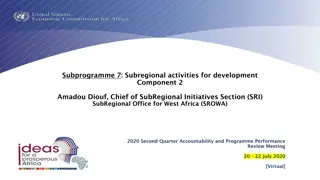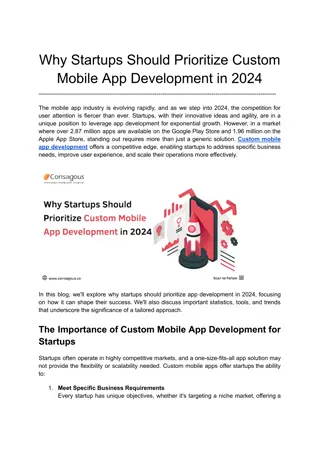Prioritising topics for policy briefs
Explicit criteria and systematic processes are crucial for well-informed decisions on prioritising policy brief topics considering limited resources. Balancing proactive and reactive priorities for effective policy brief preparation.
Download Presentation

Please find below an Image/Link to download the presentation.
The content on the website is provided AS IS for your information and personal use only. It may not be sold, licensed, or shared on other websites without obtaining consent from the author.If you encounter any issues during the download, it is possible that the publisher has removed the file from their server.
You are allowed to download the files provided on this website for personal or commercial use, subject to the condition that they are used lawfully. All files are the property of their respective owners.
The content on the website is provided AS IS for your information and personal use only. It may not be sold, licensed, or shared on other websites without obtaining consent from the author.
E N D
Presentation Transcript
Prioritising topics for policy briefs Why bother? What criteria will be used? Which topics will be considered? Who will participate? What process will be used?
Why bother? Limited resources for producing and using policy briefs Consequently, only a limited number of policy briefs can be produced It is necessary to decide which issues to address Explicit criteria and systematic processes More likely than implicit criteria and non-systematic processes to ensure well-informed decisions about which issues to prioritise Challenges to consider when deciding on and applying a priority setting process for policy briefs Ensuring that the process is both pro-active and reactive Balancing the need for a rapid and efficient process with the need for a process that is explicit, systematic and fair
Priorities should be both proactive and reactive Proactive Focusing on long-term goals and strategic planning Reactive Can respond to unanticipated events and opportunities Two ways of addressing both these needs are Using criteria that capture both of these needs can help, for example: A criterion that policy briefs should address important problems can help to focus on long-term goals and strategic planning A criterion that there should be a window of opportunity for change can help to ensure that policy briefs respond to windows of opportunity Using a process that allows for priorities to be revised or updated over short intervals of time
Policy briefs take weeks or months to prepare Unlikely to be useful to set priorities for policy briefs years or even many months in advance At least not without revising or updating them close to the time that a decision will be made Yet, priority setting processes should occur far enough in advance that there is adequate time to Collect the information that is needed to set priorities Involve policymakers and stakeholders Developing a list of priority issues that can be revised relatively quickly prior to making a decision to prepare a policy brief can help
Questions or comments about the need for setting priorities or the desirability of using explicit criteria and systematic processes?
Which topics will be considered Priorities should reflect the views of those who will be involved in and affected by the decisions policy briefs will inform Useful to consult policymakers and stakeholders widely about which topics should be discussed. Consultation might include A call for topics (problems or issues) An email box or open phone line Face-to-face or telephone meetings with key informants An advisory board or a panel Inviting comments on proposed topics Interviews, focus groups or surveys
Which criteria will be used to set priorities? Is the problem/topic important? Are viable options available that address the problem/topic and/or strategies for implementing options that may have an important impact on the problem? Is there an opportunity for change?
Is there an opportunity for change? Have political or other events opened or could they open a window of opportunity? If so, a policy brief is more likely to be useful than if change is unlikely Is there an identifiable champion for the issue? It is important that an individual or organisation is available to ensure that the outcomes of the policy brief and dialogue are acted upon If not, there is a high risk that nothing will happen Such a champion may be someone in the Ministry of Health or another key stakeholder
Additional considerations Is there important uncertainty about the problem/topic and potential solutions? Is relevant research evidence available? Is there interest in informed deliberation about the problem and potential solutions?
Questions or comments about criteria for setting priorities?
Who will participate in setting priorities? Likely to be a small group that ideally should include Policymakers with a broad overview of the health system Health system researchers with a broad overview of research Key stakeholders with different perspectives Others with relevant expertise May be pragmatic for producers of policy briefs to decide But having a broader steering group decide may help Ensure appropriate representation of different perspectives Protect against the interests of policy brief producers inappropriately influencing decisions Ensure that policy briefs address important problems and are used to inform decisions
Questions or comments about who should participate in setting priorities?
What process will be used to set priorities? A systematic and transparent process should be used to ensure that the criteria are appropriately applied Both the data used and unmeasured factors should be considered explicitly and transparently Data to inform judgements are often lacking Unmeasured factors should also be considered Group processes should ensure full participation Skilled, knowledgeable and neutral chair or facilitator can help ensure Participation Good use of time Adherence to agreed upon processes That implicit assumptions and the basis for those assumptions are made explicit
The process should be fair To ensure this, four criteria should be met Relevance Rationales for decisions should rest on reasons (criteria and information) that fair-minded people can agree are relevant in the context Transparency Decisions and their rationales should be publicly accessible Revisions Ideally, draft priorities should be open to comment prior to finalising decisions Documentation The process used to set priorities should be documented to ensure adherence to the agreed process and that the first three criteria are met
Worksheet for planning a priority setting process Who is responsible for the priority-setting process? What criteria will be used to set priorities? Who will participate in setting priorities? What potential priorities have already been identified? Who will be consulted to generate additional potential priorities? Who will be consulted about potential priorities after they are identified? What if any additional information will be collected to inform decisions about priorities and how? How will potential priorities be ranked? Who will make the final decision regarding priorities?
Worksheet for summarising the basis for prioritising a policy brief
Outline for summarising a priority setting process Who was responsible for the priority-setting process? What criteria were used to set priorities? Who participated in setting priorities? Who was consulted to generate potential priorities? Who was consulted about potential priorities after they were identified? What if any additional information was collected to inform decisions about priorities and how? Who made or will make the final decision regarding priorities? What potential priorities were considered? How were they ranked and what was the basis for their ranking?
Questions or comments about how priorities should be set?
